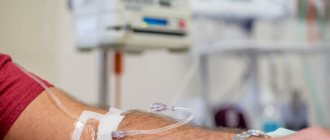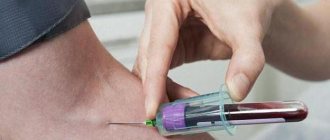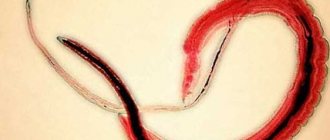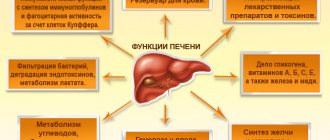How to prepare for research?
Among the many questions that concern the patient, the first is how to prepare for the study.
Since the analysis is performed by examining blood from a vein, the preparation is in many ways similar to other blood tests. It is better to collect biomaterial in the morning on an empty stomach. The day before the study, you need to exclude alcohol, as well as increased psychophysical stress. You must not eat food for 12 hours, but you can drink water (but not juice, tea or coffee). You should refrain from smoking at least an hour before the test.
Disturbances in the synthesis of prothrombin and albumin
They interest doctors because they are proteins synthesized only by the liver. However, it should be remembered that they have different half-lives: prothrombin - several tens of hours, and albumin - several days.
Thus, if the concentration of the first of these proteins decreases rapidly, this may be due to hepatic causes - a damaging factor causes extensive loss of hepatocyte function (acute liver failure). It is important to understand that depletion of prothrombin synthesis may be due to vitamin K deficiency, and abnormal albumin may be due to renal excretion (renal albuminuria) or malnutrition. So these tests show more than just problems with liver protein synthesis.
How to decipher liver profile indicators?
How to decipher liver profile indicators? This should be done by a doctor; you can do the decoding yourself only for general information. The normative values of the above indicators are most often determined separately for men and women and are:
- AlAT: women - up to 34 U/l, men - up to 45 U/l;
- AST: women - up to 31 U/l, men - up to 37 U/l;
- gamma GT: women - up to 38 U/l, men - up to 55 U/l;
- total/direct/indirect bilirubin: 3.4–17.1 µmol/l/0–7.9 µmol/l/<19 µmol/l;
- alkaline phosphatase: 30–120 U/l;
- cholesterol: 3.2–5.6 mmol/l;
- total protein: 66–83 g/l.
Phosphatase activity
Phosphatase activity can be very low or zero only in the acute form of Wilson's disease.
This is a typical enzyme indicating cholestasis, without specifying its etiology (intra- or extrahepatic), which can have very different origins:
- when taking medications, for example, promazine derivatives, anabolic steroids, androgens;
- with hepatitis, especially type A;
- for autoimmune diseases (primary biliary cirrhosis, sclerosing cholangitis);
- with numerous obstacles to the outflow of bile from the extrahepatic bile ducts (cancer and non-cancerous causes) of mechanical origin.
Sources of phosphatases are also bones, intestines, kidneys, placenta and mammary gland (lactation). The growth period in children and adolescents and all bone-fat processes lead to an increase in AR activity. Therefore, in case of poor results, it is important to determine gamma glutamyl transpeptidase (GGTP) and leucine aminopeptidase (LAP), since their activity does not increase in diseases of the bones, intestines and placenta.
You should also be aware of abnormal lipoprotein X, which is characteristic of cholestasis. This test is carried out only in specialized laboratories.
Alkaline phosphatase also has increased activity during pregnancy.
Among the above first-order tests, there is no determination of bilirubin. This is due to the empirical assumption that jaundice may be visible to the naked eye. Thus, there is no reason to conduct a test for its concentration at the first stage.
AST activity
Less sensitive and specific for liver diseases. It is very useful to use the (unnamed) de Ritis index, calculated by dividing the AST value by the ALAT value (that is, AST:ALAT). A value greater than 1 is characteristic of hepatitis. However, a result above 1 also occurs in alcoholic liver disease, acute or chronic ischemia and toxic damage - wherever a damaging factor disrupts the structure of liver mitochondria.
When chronic inflammation leads to cirrhosis, the previously constant de Ritis index greater than 1 takes on values less than 1. Therefore, it is an important prognostic element. However, when the activity of both transaminases is above 1000 U/ml, it loses its significance.
Dynamics of increased activity of ALAT and AST in blood during hepatitis
When are tests ordered?
Diagnostic tests for liver enzymes are strongly recommended as part of routine workup. Doctors, when selecting a range of tests, are based on international recommendations indicating who should undergo such biochemical tests.
First of all, you should examine:
- once a year for all patients as part of a preventive medical examination;
- people belonging to a group at increased risk of liver diseases, including obesity, diabetes and hyperlipidemia;
- patients taking intravenous drugs are promiscuous, have multiple sexual relationships, and frequently travel to developing countries;
- people who drink alcohol excessively;
- patients who chronically receive potentially hepatotoxic drugs;
- patients who have undergone blood transfusion;
- patients with symptoms that may be associated with liver dysfunction.
The list of such symptoms is quite long. The most important of them are:
- jaundice;
- palmar erythema;
- presence of spider veins;
- nail changes,
- Dupuytren's contracture;
- expansion of the vein around the navel;
- enlargement of the liver, often also of the spleen.
Palmar erythema
Presence of spider veins
Performing basic diagnostic tests to detect liver disease includes alanine aminotransferase (ALAT), asparagine aminotransferase (AST), and alkaline phosphatase (AP).
Second level diagnostic procedures
- GGTP,
- concentration of albumin and bilirubin,
- prothrombin time.
These tests are performed when abnormalities have been found in previous tests or when other circumstances indicate the need for testing. For example, a young man says that his eye area periodically turns yellow due to stressful situations.
In this case we are talking about suspicion of Gilbert-Meulengracht syndrome. In this case, to confirm the diagnosis, it is necessary to determine the concentration of bilirubin, dividing it into conjugated and unconjugated fractions, transaminases, etc.
Determination of bilirubin concentration
GGTP activity
Increased activity of this enzyme is in practice associated with chronic alcoholism. Increasing values may prove that the patient is not following medical recommendations. If, in addition, the average red blood cell volume exceeds 100 fL (typical of about 80% of alcoholics) and the de Ritis index is greater than 2, suspicion is highly probable, although, according to the eminent hepatologist Dame Sheil Sherlock, the best test in this case is detection ethanol in the blood.
It is important to consider that this enzyme is not suitable for screening for liver disease, since its activity is also increased after a single recent drink of alcohol, use of anticonvulsants, kidney and pancreatic disease, coronary heart disease, prostate cancer and diabetes.
In some pregnant women, despite cholestasis, GGTP may be within normal limits.








